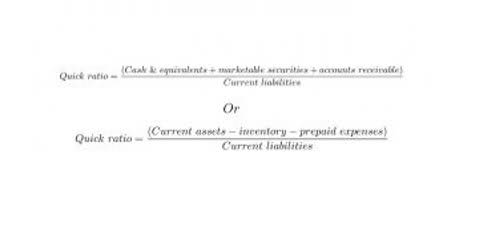
Creating a comprehensive income statement template is essential for businesses to track their financial performance. This document provides insights into revenues, expenses, and profits over a specific period, aiding in strategic decision-making and financial planning. A well-structured template ensures consistency and clarity, making it easier for stakeholders to interpret data.
- A listing of the accounts available in the accounting system in which to record entries.
- These can include gains or losses from investments, interest income, or interest expense.
- Hence, asset accounts such as Cash, Accounts Receivable, Inventory, and Equipment should have debit balances.
- Two examples are (1) the cost of making and selling one or more additional units of product, and (2) the cost of missing an opportunity.
- Nonoperating revenues or income, nonoperating expenses, gains, and losses result from activities outside of the company’s main business activities.
Income statements: an overview
- A separate line within stockholders’ equity that reports the corporation’s cumulative income that has not been reported as part of net income on the corporation’s income statement.
- For instance, these could be assets accrued from the sale of land or an old vehicle.
- Hence the balance sheet accounts are called permanent accounts or real accounts.
- For example annual statements use revenues and expenses over a 12-month period, while quarterly statements focus on revenues and expenses incurred during a 3-month period.
- If a company’s stock is publicly traded, earnings per share must appear on the face of the income statement.
For example, the preferred stockholders will be paid dividends before the common stockholders receive dividends. In exchange for the preferential treatment of dividends, preferred shareholders usually will not share in the corporation’s increasing earnings and instead receive only their fixed dividend. A balance sheet heading or grouping that includes both cash and those marketable assets that are very close to their maturity dates. A listing of the accounts in the general ledger along with each account’s balance in the appropriate debit or Bookstime credit column. The total of the amounts in the debit column should equal the total of the amounts in the credit column.

Income statement is one in a set of five financial statements

Aligning the format with the business’s needs ensures relevance and utility. A comparative income statement juxtaposes financial data across multiple periods, enabling businesses to track performance trends and assess growth. Comparing figures over time helps identify factors influencing financial outcomes, such as market shifts or management decisions, and guides strategic adjustments. These expenses are listed individually here, but some income statements will bundle these and other similar expenses together into one broad category called “Selling, General & Administrative Expenses” (SG&A).
- Interest expense is a nonoperating expense for most businesses since financing is outside of their main activities of purchasing/producing goods and selling goods and/or providing services.
- An income statement is an important financial report that provides rich information on how a business or company is doing and how it’s likely to perform in the future.
- Consider business XYZ that earned $25,000 from the sale of goods and $3,000 as revenue from training personnel.
- A loss of SAR 3,000 will be reported, for instance, if a business automobile is sold for SAR 15,000, but its book value is SAR 18,000 instead.
- For a manufacturer these are expenses outside of the manufacturing function.
What are income statement accounts?
Multi statement of profit and loss and other comprehensive income reports and present the profit and loss statement in the difference statement from other comprehensive income statements. The entity could decide to present its income statement in the single statement of profit and loss and other comprehensive income allowed by IASB. This statement reports the Other comprehensive income in a single statement with the statement of profit and loss.
The reason is that only the amount that has been earned can be included in December’s revenues. The amount that is not earned as of December 31 must be reported as a liability on the December 31 balance sheet. Multi-step income statement – the multi-step statement separates expense accounts into more relevant and usable accounts based on their function. Cost of goods sold, operating and non-operating expenses are separated out and used to calculate gross profit, operating income, and net income.
Asset Accounts
Moreover, Losses and Gains are not usually recorded as such in this kind of statement but fall under one of the above categories. Under the accrual basis income statement accounts of accounting, revenues are recorded at the time of delivering the service or the merchandise, even if cash is not received at the time of delivery. Sales are reported (recognized) on the income statement when the ownership of the goods passes from the company to the customer.
Do you own a business?

For instance, a consulting company may earn some rental revenue from properties owned. This will be non-operating revenue, not tied to the core consulting business. In addition, interest income earned from capital lying in the bank is also part of a non-operating revenue portfolio.

Likewise, the profits that a business gets from one-time non-business activities are also a part of the business gains—for instance, a business selling off its unused lands or old vehicles. Gross profit is the net sales minus the total cost of the goods that a business offers for sale. Net sales are the amount that one brings in for the sold goods, while COGS is the amount that a business spends while manufacturing those goods. Under both US GAAP and the International Financial Reporting Standards, the income statement is presented as a separate statement. Often measured as the contribution margin given up by not doing an activity. For example, if a sole proprietor is foregoing a salary and benefits of $50,000 at another bookkeeping job, the sole proprietor has an opportunity cost of $50,000.

